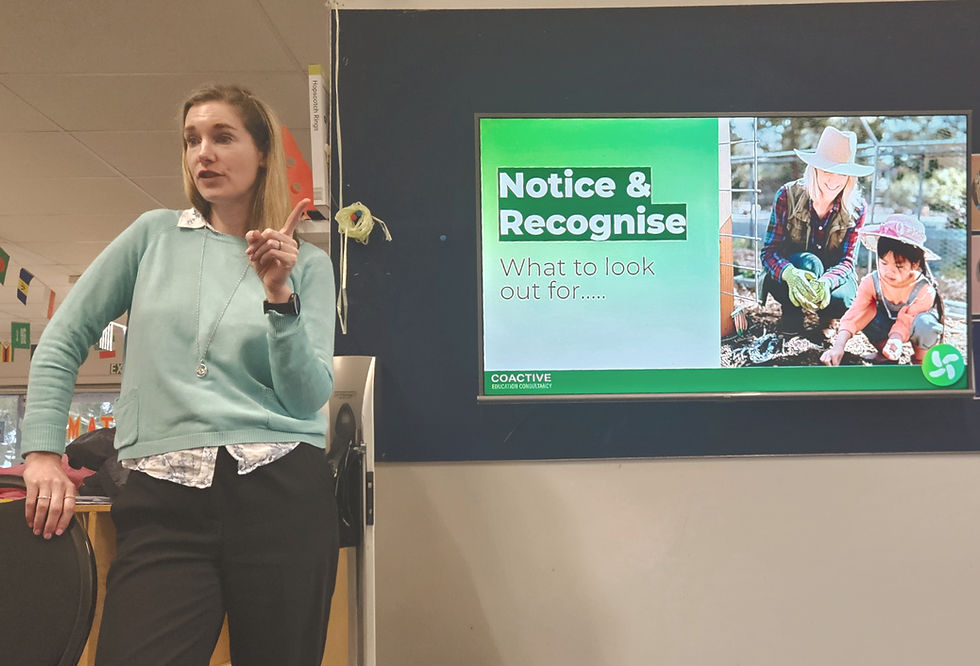Storytelling, Sound Play & Safe Spaces: Embedding Kōwhiti Whakapae into Daily ECE Practice
- Michelle Nel

- Jul 21
- 3 min read
Updated: Sep 3
Early literacy is more than learning to read and write- it’s about unlocking the potential of young minds through rich language, meaningful interactions, and intentional teaching. As a Literacy Education Consultant and Structured Literacy Leader, it’s a privilege to walk alongside kaiako in both early childhood and primary settings, helping to build strong, evidence-based foundations for literacy.
A large part of my mahi has centred on partnering with ECE teams to unpack Kōwhiti Whakapae, the online curriculum resource that guides learning progressions for tamariki in early learning environments. Through workshops, in-centre coaching, and shared reflection, kaiako have begun to notice the impact of simple, intentional practices: shared storybook reading that sparks curiosity and vocabulary, playful phonological games that build brain pathways, and everyday conversations that strengthen oral language and comprehension.

In workshops best practice is modelled and space is created for kaiako to experiment, reflect, and refine together. The goal is always to support teachers to feel confident, capable, and connected to the “why” behind their practice. One of the most rewarding shifts has been seeing kaiako grow in confidence as they recognise that early literacy is woven into every moment of the day, long before formal instruction begins. Whether we’re playing with syllables in a waiata or co-constructing a plan to support emergent writers, we’re building the future one conversation, one story, one learning moment at a time.
As a primary school teacher I have been fortunate enough to gain years of experience implementing Structured Literacy approaches, and am committed to supporting the planning, assessment, and teaching of literacy to our junior tamariki with clarity and purpose. Nothing is left to chance, as the essential building blocks of decoding to read and encoding to write are taught deliberately and sequentially, with the needs of each learner at the centre. It’s a collaborative process aligning our classroom practice with research evidence, making space for professional dialogue, and ensuring we are creating equitable pathways for all learners. Watching children who once struggled become fluent, enthusiastic readers is a constant reminder that the work we do matters.
For those on this literacy journey, a few guiding ideas can make a powerful difference:
Start with oral language: Rich conversations, waiata, and storytelling form the bedrock of early literacy. Prioritise opportunities for children to speak, listen, and express themselves authentically.
Make phonological awareness playful: Games that explore sounds, syllables, and rhyme build essential brain pathways—no worksheets required!
Be intentional with books: Shared reading is powerful. Choose books that foster discussion, curiosity, and vocabulary growth. Model how we think while we read.
Build your own knowledge: Understanding how literacy develops through the Sciences of Reading and frameworks like Kōwhiti Whakapae equips you to make confident, responsive teaching decisions.
Model and reflect together: Create a culture of collaboration. When educators plan, practice, and reflect together, great things happen for children.
Stay curious and kind: Every child brings their own kete of language, experience, and potential. Meet them with high expectations and deep care.
This blog was written by Coactive Education early Literacy facilitator, Michelle Nel.
Michelle Nel is an experienced primary school teacher and Team Leader, as well as a Literacy Education Consultant. In her role as a Structured Literacy Leader, she supports teachers in planning and implementing pedagogical practices grounded in the Science of Reading. Her work ensures that young learners build a strong foundation for lifelong literacy. Her passion lies in guiding and empowering teachers to develop evidence-based, engaging literacy practices that foster student success.




Comments